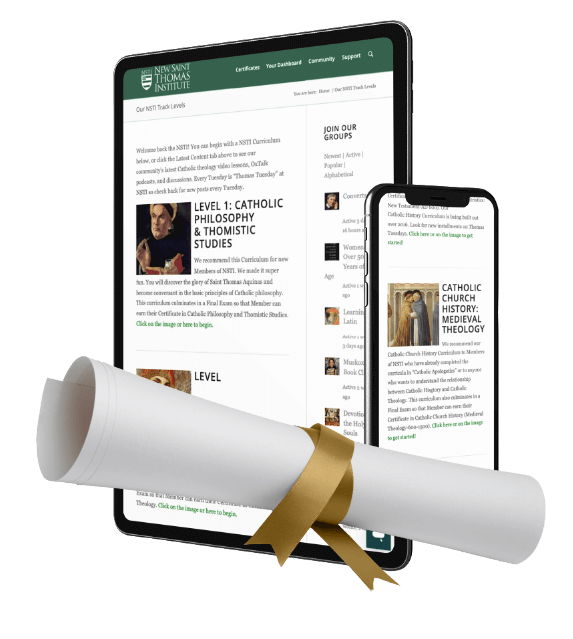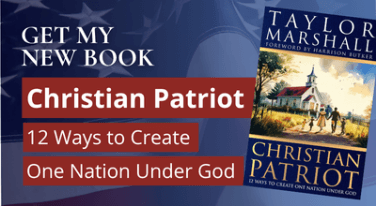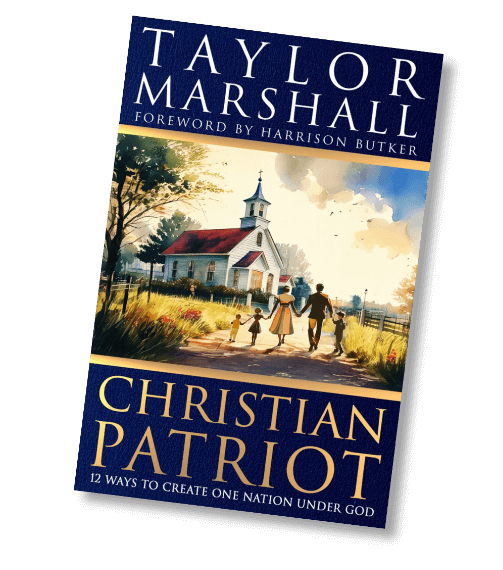Criticism: Did Mary Really Give the Rosary to Saint Dominic? (Pope Leo XIII answers)
“Mary instituting the Holy Rosary
through St Dominic” by Murillo
Catholic tradition states the Blessed Virgin Mary directly and personally instituted the Holy Rosary through Saint Dominic. A previous post described the traditional account of “How Mary Gave the Rosary to Saint Dominic.” In this second post we examine the historical-critical objection claiming that the Rosary was an organic development of medieval piety and that Mary did not directly give the Holy Rosary to St Dominic.
I’ll reveal my hand up front: I think this modern claim is incorrect and too simplistic. It’s perfectly reasonable to believe that Mary gave the Holy Rosary to Saint Dominic. Here’s why…
First, let’s examine the modernist argument against the Marian origin of the Holy Rosary. Some moderns hold that the traditional account depicting Mary giving the Rosary directly to St Dominic is a pious etiological myth. This myth, they say, allegorizes the origin of the Rosary with the Dominican order. The “true” story, the moderns claim, is that the Rosary was a gradual and historical development. They say that since the Dominicans popularized the Rosary devotion, the traditional myth personifies the Dominicans in the person of Dominic. So then, the moderns allege that the Blessed Virgin Mary did not directly give the Rosary to Dominic. Rather, the Dominicans popularized the devotion and so Mary “sort of” gave the Rosary to the world through the “sons of Dominic,” i.e. the Dominicans.
These moderns observe that the practice of praying Our Father’s and Hail Mary’s on beads is a practice that predates Saint Dominic, and that this “Rosary” gradually evolved. This fact, they claim, further substantiates the conclusion that the Holy Rosary is not a revealed gift given directly to Dominic by the Blessed Virgin Mary herself.
While it is certain that many (East and West) prayed on beads prior to Saint Dominic, the original claim is that the Holy Rosary as a collection of 150 Hail Mary’s with the 15 Mysteries (Joyful, Sorrowful, Glorious) was literally and historically given to Saint Dominic by the Immaculate Mother herself.
Summary of points so far:
1) Moderns claim that the tradition of Mary giving the Rosary to Dominic is an etiological myth.
2) It is true: praying Our Fathers and Hail Marys on beads predates Saint Dominic (in fact, the word “bead” comes from the word “bid” meaning “pray” or “ask”).
3) The key to this debate is realizing that the Holy Rosary is not merely praying on beads, but praying the 150 Hail Mary’s with the 15 corresponding mysteries.* It is this special combination of 150 Hail Mary’s with the 15 mysteries that constitutes the Rosary and it is this “combination” of vocal and mental prayer that Mary gave to St Dominic.
What does the Catholic Church say?
Pope Leo XIII, in his encyclical Octobri mense, teaches that the Rosary does in fact have its origin from the Immaculate Mary herself “by her command and counsel” to Saint Dominic. Pope Leo XIII teaches:
“That the Queen of Heaven herself has granted a great efficacy to this devotion is demonstrated by the fact that it was, by her command and counsel, instituted and propagated by the illustrious St. Dominic, in times particularly dangerous for the Catholic cause.”
Pope Leo XIII also clarified that this original institution of the Holy Rosary by Mary included the Joyful, Sorrowful, and Glorious Mysteries, which he calls the “great mysteries of Jesus and Mary, their joys, sorrows, and triumphs.”
In his Supremi Apostolatus Officio, Pope Leo XIII again confirms the supernatural origin of the Holy Rosary of Saint Dominic:
Great in the integrity of his doctrine, in his example of virtue, and by his apostolic labors, he proceeded undauntedly to attack the enemies of the Catholic Church, not by force of arms, but trusting wholly to that devotion which he was the first to institute under the name of the Holy Rosary, which was disseminated through the length and breadth of the earth by him and his pupils. Guided, in fact, by divine inspiration and grace, he foresaw that this devotion, like a most powerful warlike weapon, would be the means of putting the enemy to flight, and of confounding their audacity and mad impiety. Such was indeed its result. Thanks to this new method of prayer—when adopted and properly carried out as instituted by the Holy Father St. Dominic—piety, faith, and union began to return, and the projects and devices of the heretics to fall to pieces.
The tradition is further confirmed by the apparition of the Immaculate Mary to Blessed Alan de la Roche:
“My son, you know perfectly the ancient devotion of my Rosary, preached and diffused by your Patriarch and my Servant Dominic and by his spiritual sons, your religious brothers. This spiritual exercise is extremely agreeable to both my Son and to me, and most useful and holy for the faithful. When my Servant Dominic started to preach my Rosary … the reform in the world reached such heights that it seemed that men were transformed into angelic spirits and that Angels had descended from Heaven to inhabit the earth. … No one was considered a true Christian unless he had my Rosary and prayed it. … The prestige of the holy Rosary was such that no devotion was or is more agreeable to me after the august Sacrifice of the Mass.”
As discussed elsewhere, the three apparitions after the Miracle of the Sun also symbolize the three mysteries of the Holy Rosary: Miracle of the Sun Symbolizes Mysteries of the Rosary.
* 15 Mysteries of the Rosary that Mary gave to Dominic
Joyful:
Annunciation
Visitation
Nativity
Presentation
Finding Jesus in the Temple
Sorrowful:
Agony in the Garden
The Scourging
Crowning with thorns
Carrying of the Cross
Crucifixion
Glorious:
Resurrection
Ascension
Pentecost
Assumption
Crowning of Mary
Recommended sermon: Power and Promises of the Holy Rosary
What to Watch Next
I share my thoughts and memories of Charlie Kirk. Taylor’s new Bestselling Book: Christian Patriot: https://amzn.to/4n70va2 Watch...
How do you know if someone is possessed by a devil? How do people become possessed by...
Get your copy of Christian Patriot (4 link options): Order on Amazon https://amzn.to/4oZPXuJ Order on Bookshop.com (currently...
SHOP THE TAYLOR MARSHALL STORE
Dive Deeper

GET CONFIDENT IN YOUR FAITH
Explore the fascinating world of Catholic teachings with Dr. Marshall. Together you’ll unpack the brilliant answers the Church gives to tough questions about the Faith. The best part: you go at your own pace. Start this exciting journey today.


 >
>




